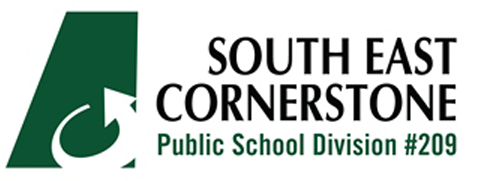By Norm Park, SE Cornerstone
Engagement with stakeholders is a major requirement entrenched in the Southeast Cornerstone Public School Division’s system.
Just how detailed this can get, was outlined to the school board’s members on Wednesday by Director of Education Lynn Little during the board’s monthly meeting.
The communication network involves conversations and connective avenues that include other agencies, personnel, general public, families and students.
These communication systems take several forms, Little noted, while giving examples such as the recent forum with MLAs representing constituencies embraced by the sprawling Cornerstone school division. This, she said, was an excellent two-way information gathering exercise that was well worth the effort at least once a year. It enabled both parties to provide and gather information.
Little also noted there are regular meetings and committee work sessions with their southeast education partner, the Holy Family Roman Catholic Separate School Division, since they share common ground and students.
The school division also sends members to all Saskatchewan School Board Association forums and have representatives for School Community Council (SCC) sessions. They engaged in three Engagement and Information meetings within this academic year.
Engagement with SCC councils even beyond that scope, is encouraged to provide board members with more information so they can support each school’s learning plan. The Engagement and Information evenings, over and above regular SCC sessions were held in Redvers, Estevan and Weyburn this school year.
Every SCC also holds an annual general meeting where school and division goals and data are shared and discussed. Some schools have now implemented Advisory Councils in partnership with their First Nations communities to learn more about the learning needs of First Nations students and to engage in a more formal dialogue as to how this can be delivered, which are also part of this network.
Little also explained there are parent nights arranged at different schools that may focus on one or several topics of a local nature.
Other communications practices include such things as parent and child reading nights, kindergarten or new student orientation, specific project sessions engaging students and teachers, daycare visits, literacy nights, book circles, student-led conferences, and various other school or group initiatives.
The communication exercises continue through to organizing the school calendar year, administrative councils to provide feedback and direction, as well as regular meetings by superintendents and also the South East Community Mobilization Steering Committee that is comprised of representatives from senior management from Saskatchewan Health, city police from Weyburn and Estevan, RCMP and Social Services. She said there is regular contact with the local teachers’ association and other leadership team opportunities throughout the school year.
The information was provided to the board as a monitoring report for System Goal #4, “Our Division systematically builds, strengthens and maintains two-way communication with the internal and external stakeholders.”



